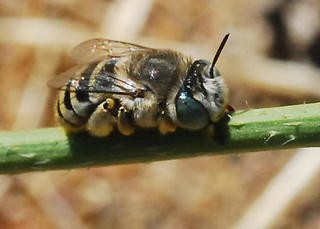Anthophora squammulosa
(Anthophora squammulosa)

Description
Anthophora squammulosa is a bee fromthe real bee family (Apidae). The species is widespread in Nicaragua, and occurs particularly densely on the Masaya volcano. The females lay their nests in the ground at a depth of about 30 cm. How the bees cope with the high levels of sulfur dioxide and resulting acid rain emanating from the volcano has not yet been researched. Pollen is collected almost exclusively from the white flowers of Melanthera nivea. The bee genus Anthophora is one of the largest in the family Apidae, with over 450 species worldwide in 14 different subgenera. They are most abundant and diverse in the Holarctic and African biogeographic regions. All species are solitary, though many nest in large aggregations. Nearly all species make nests in the soil, either in banks or in flat ground; the larvae develop in cells with waterproof linings and do not spin cocoons. Males commonly have pale white or yellow facial markings, and/or peculiarly modified leg armature and hairs. Anthophora individuals can be distinguished from the very similar genus Amegilla by the possession of an arolium between the tarsal claws.
Taxonomic tree:







